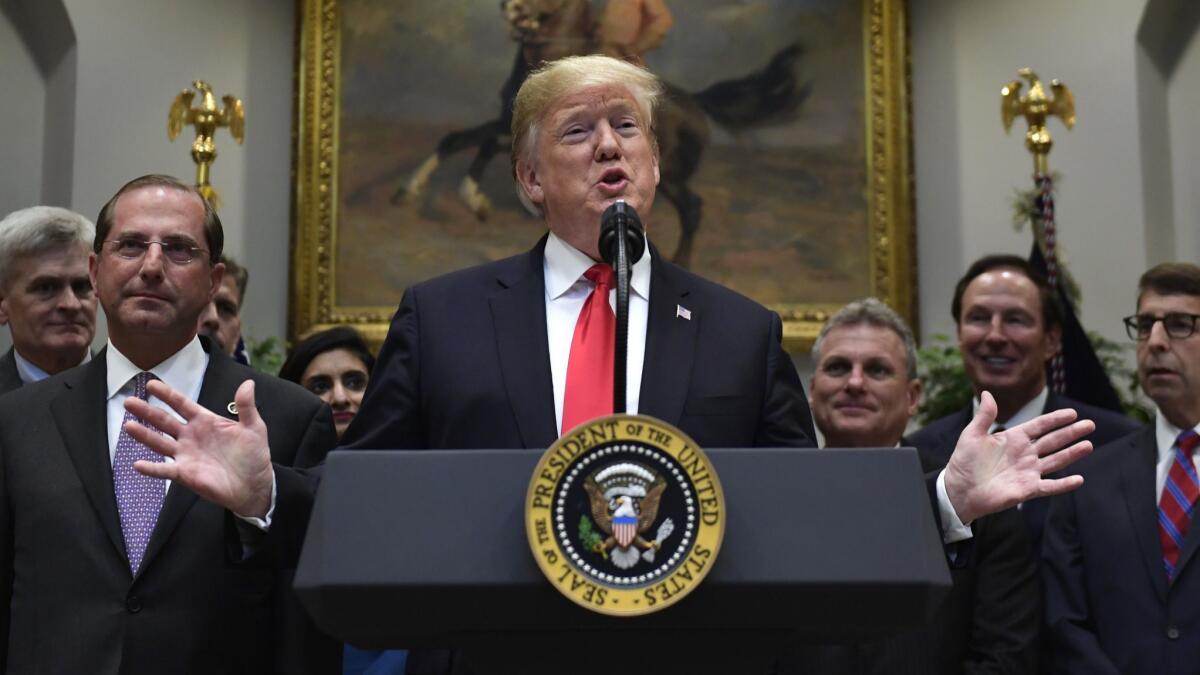Editorial: Trump’s plan to reduce drug prices might be unconstitutional. It also won’t help much

- Share via
The Trump administration on Monday unveiled its latest proposal for reining in the cost of pharmaceuticals: requiring television advertisements for prescription drugs to display the price tag of the medication being promoted. For the 10 drugs seen most often on TV, the administration says, those list prices range from $535 to a whopping $11,000 per month or per course of treatment.
Like the administration’s other efforts to address this issue, the mandate is a small response to an enormous problem. The United States spends more per capita on prescription drugs — roughly half a trillion dollars a year — than any other country, and that spending has been increasing far faster than inflation, wages or the U.S. economy. The assumption behind the proposal is that forcing a pharmaceutical company to reveal the list price of the fabulous new cure it is touting will somehow shame it into keeping the price down.
Good luck with that. Although a handful of drug makers have reduced or canceled price increases this year in response to President Trump’s criticism, most have not. According to the Associated Press, prices went up on 4,412 brand-name drugs in the first seven months of 2018, and down on 46.
Some critics also argue that it would violate the free speech protections of the 1st Amendment to force drug companies to disclose their list prices. And drug makers note correctly that very few people actually pay list prices.
Enter the Fray: First takes on the news of the minute from L.A. Times Opinion »
The proposal would reveal little about how much those drugs ultimately sell for, or how much people with insurance will pay for them — directly (through deductibles and co-pays) and indirectly (through premiums).
To its credit, the administration has been actively trying to slow the rise of drug costs through an array of often down-in-the-weeds reforms. And in sharp contrast to what it has done on Obamacare, the administration’s efforts to boost competition, alter incentives and increase transparency have generally helped consumers. But drug makers are unusually well insulated from the market forces the administration is trying to marshal — they have patents that guarantee them temporary monopolies, products that are vital and even life-saving, and customers whose bills are often paid by insurers. It will take much more dramatic changes to make a meaningful difference in drug prices.
Follow the Opinion section on Twitter @latimesopinion and Facebook
More to Read
A cure for the common opinion
Get thought-provoking perspectives with our weekly newsletter.
You may occasionally receive promotional content from the Los Angeles Times.









